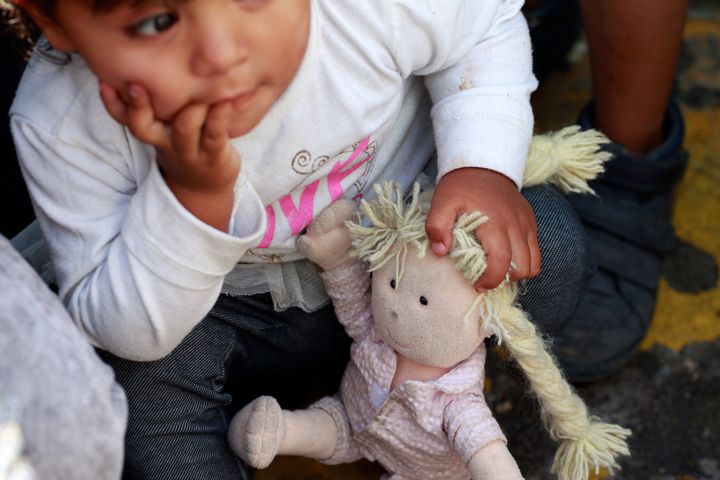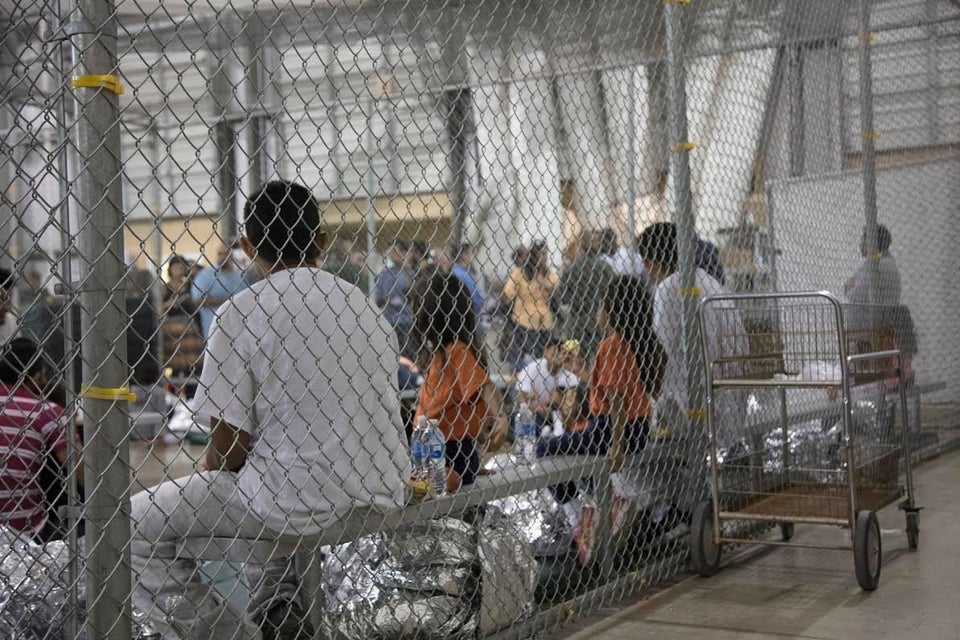After a massive public outcry, President Donald Trump signed an executive order Wednesday to end his administration’s policy of separating migrant families at the border. But his order fails on two accounts.
First, his administration is ending forced family separation by massively expanding the government’s capability to detain children with their parents. The American Academy of Pediatrics panned the order, saying detention centers are “no place for a child.”
“Conditions in U.S. detention facilities, which include forcing children to sleep on cement floors, open toilets, constant light exposure, insufficient food and water, no bathing facilities, and extremely cold temperatures, are traumatizing for children,” wrote Colleen Kraft, the AAP’s president. “No child should ever have to endure these conditions.”
Second, there are no plans to reunite the approximately 2,300 previously separated children with their parents. Health and Human Services officials told CNN that those minors will continue to be processed as unaccompanied minors, which means that after time in a shelter, they are handed over to friends, relatives or foster care, not to the parents who brought them to the U.S.
This continued separation means that the inhumane treatment at the hands of the federal government — as defined by the AAP, the American Medical Association and other pediatric experts in statements about Trump’s zero tolerance policy — continues. And it could cause serious damage, especially among the youngest children being detained in “tender age” shelters, said Chandra Ghosh Ippen, an associate director of the child trauma research program at the University of California at San Francisco.

The consequences of this continued separation, especially for infants and toddlers, could be dire. Not only are they separated from their parents — who have loved and cared for them since birth — but shelter caretakers stepping into the void have reportedly been compelled to withhold physical touch from the children.
“We have to recognize that youth makes you more vulnerable. It does not protect you from an event like this,” Ghosh Ippen said. “The No. 1 [priority] is to get these children back into the loving arms of a parent who can help them to calm down and regulate and who can really hold them as they express their feelings.”
Reports from tender-age shelters that hold the youngest migrants reveal that there are toddlers melting down in distress but that the caregivers are not allowed to pick up, hold or hug the children. One shelter staffer quit after being forced to tell children separated from their parents that they couldn’t hug one another.

Conducting long-term experiments that withhold physical touch from very young children is rightly considered unethical now, but past research on institutionally raised children and studies conducted on animals with similar developmental needs paints a very somber picture of the effects of a lack of physical affection from a caring parent.
For instance, research on newborn monkeys deprived of skin-to-skin contact with their mothers, as well as studies of children raised in Romanian orphanages, indicates that physical touch and a steady bond with at least one constant caretaker are paramount when it comes to brain development. Without it, monkeys and babies have stunted physical growth, an inability to connect with their peers and cognitive disabilities such as language delay, disordered attachment to caregivers and behavior like frequent rocking.
There’s already some anecdotal evidence that the family separations, which may have begun as early as October of last year, are already hurting children’s development, Kraft told CNN after touring one of these tender age shelters.
“Normally, toddlers are rambunctious and running around, and we had this one child just screaming and crying, and the others were really silent,” she said in response to a question about the effects that lack of physical contact might have on young children. “And this is not normal activity or brain development for these children. The takeaway is that these children need their parents.”
Even children who are sent to foster homes, where they should theoretically feel safer, are still in terror because they have no idea when they’ll see their parents again, if ever. Foster parents in Michigan told The New York Times that a 3-year-old child staying with them is different from other children they’ve hosted, since no one has any idea if or when he’ll be reunited with his father. That uncertainty has been terrifying for the youngster, who screamed and cried for almost an hour after his first phone call with his dad.
Even if children are swiftly moved through institutional detention centers and placed with extended family, friends or foster care in the U.S., Dr. Dean Blumberg, an associate professor of pediatrics at the U.C. Davis Children’s Hospital, predicted a whole range of negative outcomes for the thousands of children who were separated from their families at the border, depending on their age and length of separation.
A teen, for example, might suffer from nightmares or mild post-traumatic stress disorder after being detained in a chain-link cage with strangers but could move on with support and might eventually view a few months as a scary episode that has ended.
An infant or a toddler, on the other hand, could be affected for life. Forced separation from a parent for a few months is a proportionally larger time in their young lives and could cause behavioral or neurodevelopmental problems, chronic illnesses or other issues.
There are reports of babies as young as 3, 8 and 11 months who were taken from their parents at the border.
Many people think that the youngest people might not remember a period of separation and lack of physical touch, but they do remember, and the experience will deeply affect the way that they continue to develop, said Ghosh Ippen. They are the ones most at risk of long-term harm as a result of family separation.
“This shapes the core of your worldview — that you can be stripped so cruelly from your parents and you can be left alone and stranded,” she said. “That you can be distressed and people don’t come to you.”
CORRECTION: A previous version of this story misstated a quote from Ghosh Ippen. She said the youngest detained children will remember the period of separation, not that they might not remember.

